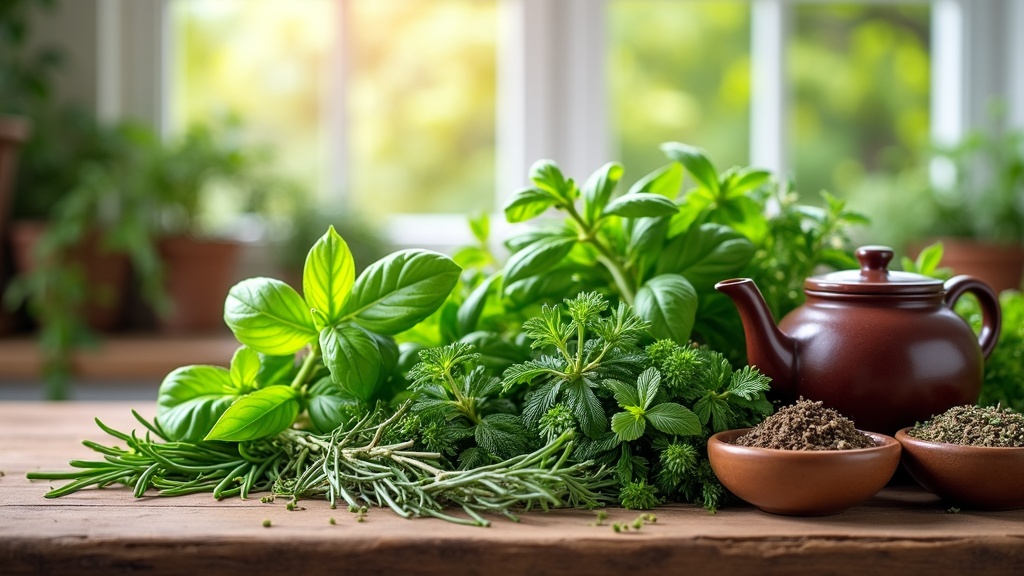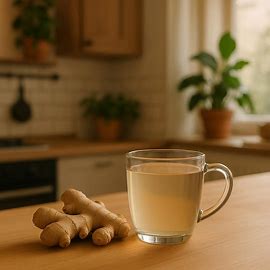Herbs have been part of wellness traditions for thousands of years, popping up in everything from ancient remedies to today’s viral wellness trends. I get a lot of questions about how to actually use herbs in daily life, whether that’s sipping them in a warm tea, tossing fresh leaves into a salad, or even making skin-soothing balms at home. Integrating herbs into your everyday routine is easier than you might think and offers a natural way to add flavor, aroma, and even a little bit of extra support for your body and mind.

Why Use Herbs in Your Daily Wellness Routine?
Bringing herbs into your daily life is about getting back to basics, using natural plants to support health, give a boost to flavors, and sometimes just to enjoy a comforting ritual. Plenty of research highlights how many herbs offer helpful nutrients, antioxidants, and bioactive compounds. Herbs like basil, rosemary, and turmeric are linked to benefits like better digestion, toned down inflammation, and even increased relaxation. You’re not just flavoring your food; you’re also adding in a bit of plant-powered goodness.
Using herbs daily is pretty practical, too. Fresh or dried, in teas or meals, they don’t require fancy gadgets or expensive supplements. A little goes a long way, and you can start small—maybe one new herb at a time—so it doesn’t feel overwhelming.
Beyond their health perks, herbs have a way of brightening up your space and food. Keeping a small pot of mint or basil by the kitchen window can add a splash of green and a fresh aroma to the room, making the overall atmosphere more inviting. You may even surprise yourself with the creative ways you start to add these natural flavors into snacks, beverages, or even homemade salad dressings.
How to Incorporate Herbs Into Your Daily Life
Using herbs isn’t complicated, but a bit of know-how helps you make the most of them. Here are some super practical ways I like to bring herbs into my day:
- Culinary Use: Sprinkle chopped parsley, cilantro, basil, or dill over meals. Add rosemary or thyme when roasting veggies or potatoes. Toss fresh mint leaves in salads or smoothies for a kick of flavor.
- Herbal Teas: Brew your own tea with loose dried herbs like chamomile, lavender, lemon balm, or peppermint. Steeping fresh ginger or turmeric root, especially with honey and lemon, is another favorite of mine when I want something warming or soothing.
- Infused Oils and Vinegars: Soak rosemary, oregano, or garlic in olive oil. Or, let tarragon or basil sit in apple cider vinegar for a few weeks; these infusions add a burst of flavor to dressings and marinades.
- Herbal Baths and Skincare: Toss fresh lavender or calendula petals into bathwater, or make a simple skin-soothing balm by gently heating olive oil with dried chamomile, straining, and blending with a bit of beeswax.
- Daily Rituals: Start or end the day with a calming herbal tea, sprinkle cinnamon or cardamom on your morning oatmeal, or add a dash of turmeric to scrambled eggs or golden milk drinks.
Herbs don’t have to take over your life. Swapping out just one spice for a fresh or dried herb, even once a day, can be a pretty fun and refreshing upgrade to your routine.
Beyond the kitchen, try weaving herbs into moments throughout your day. Keep a jar of dried lavender by your bedside for a relaxing scent before sleep, or rub a fresh mint leaf between your fingers to perk up your senses during a midafternoon slump. These small moments can make a difference in your mood and help set a mindful tone for routines both big and small.
Everyday Herbs: What to Try First
It surprises a lot of people to realize that herbs aren’t just for special-occasion meals or complicated remedies. Here’s a quick guide to a few herbs that fit easily into daily routines:
- Basil: Toss fresh basil onto pizzas, salads, or sandwiches.
- Mint: Stir into iced water, lemonade, fruit salads, or even homemade yogurt.
- Rosemary & Thyme: Perfect for roasting vegetables, adding to chicken dishes, or mixing into breads.
- Parsley & Cilantro: Freshen up soups, stews, salsas, or grain bowls with a handful of chopped leaves.
- Turmeric & Ginger: Grate directly into curries, smoothies, stir-fries, or warm drinks for a spicy, earthy burst.
- Chamomile & Lemon Balm: Steep for a relaxing tea after dinner or whenever winding down is needed.
You don’t need to buy out the spice aisle. Start with one or two, and see where your taste buds and curiosity take you.
In fact, shopping for herbs can be as simple as picking up a fresh bunch at the grocery store, or even growing a few basics like mint, parsley, or chives on a windowsill. If you’re feeling adventurous, check out an international market for specialty herbs like shiso or epazote. Exploring new flavors can be a small adventure and give a subtle twist to familiar dishes.
How Are Herbs Used in Everyday Life?
Herbs slip into daily life in even more ways than most people realize. Here’s where you’ll frequently find them beyond the kitchen:
- Home Remedies: Chamomile and lemon balm for relaxing teas, ginger for queasy stomachs, thyme syrup or teas for a scratchy throat.
- Natural Cleaners: Essential oils from herbs like lavender, tea tree, or eucalyptus are used in many green cleaning products for their fresh scent and gentle power.
- Air Fresheners: A small bundle of fresh rosemary or lavender can freshen up a bathroom or bedroom without synthetic fragrance sprays.
- Gardening: Growing herbs like basil, chives, or parsley indoors or on patios not only looks good but also means herbs are always within reach.
Herbs aren’t just something you sprinkle on top of food, they show up in all sorts of wellness routines, helping with mood, flavor, and even relaxation.
People also use herbs for pets or as gentle additions to homemade products. Calendula petals, for example, are sometimes used in simple balms for dry skin, and mint can be added to homemade tooth powder or pet bedding for a fresh scent. Explore what fits your lifestyle and always double-check safety before using an herb in a new way.
Choosing the Best Herb to Take Daily

If I had to pick one herb that’s easy to work into almost any daily routine, I’d go with ginger. Ginger gets used all over the world, and it’s backed by plenty of studies for its calming effects on the stomach, as well as its potential to support the immune system and fight inflammation (source).
Fresh ginger root keeps for weeks in the fridge and can be chopped, sliced, or grated into stir fries, salad dressings, teas, and even desserts. Those tiny ginger tea packets are also super handy. Plus, ginger’s warm, spicy bite is a good pickmeup any time you need a flavor or energy boost.
A close runner-up is mint. It grows quickly (sometimes too quickly if you plant it outdoors), and the leaves can go straight into savory or sweet dishes, herbal water infusions, and calming teas. Plus, the scent of fresh mint leaves alone is enough to add a touch of brightness to any drink or snack.
Things to Know Before Adding More Herbs to Your Routine
Herbs are generally pretty safe when used in food amounts, but there are a few practical things to know before you start tossing new leaves or roots into everything you eat and drink:
- Food Allergies: Double-check for any allergies or sensitivities, especially if you’re trying less common herbs.
- Dosing: More isn’t always better. Huge amounts of certain herbs, like licorice root or sage, aren’t recommended for long periods without talking to a healthcare professional.
- Interactions: If you take prescription meds or are pregnant or breastfeeding, check with your doctor or a herbalist before using larger amounts of herbs, since some can interact with medications or conditions.
- Source: Choose reputable brands, especially when buying dried herbs or premade blends. Organic is a nice option, when possible, if you want to avoid pesticides.
Being a bit mindful will help you get the most benefit while keeping things safe and simple.
For anyone growing or harvesting wild herbs, spend some time reading up or consulting with a professional so you can spot safe plants. Mixing up lookalike species by mistake can happen, so staying sharp is key. If in doubt, stick to culinary herbs you can easily identify or buy.
Advanced Tips for Making Herbs Part of Your Daily Wellness Ritual
Once you get comfortable including herbs here and there, taking things up a notch is pretty easy:
Plan Herbs with Meals:
Make a habit of tossing fresh herbs onto dishes just before serving. Set a little bowl of chopped parsley in the fridge so adding it is a breeze.
Grow a Windowsill Herb Garden:
Fresh basil, chives, and mint grow well indoors. Snipping your own herbs is both relaxing and convenient.
Blend Your Own Herbal Teas:
Try mixing dried chamomile with lemon balm, or mint with a little grated ginger. Experiment until you find flavors you love.
DIY Herbal Vinegars & Salts:
Mince herbs like rosemary and thyme and mix with coarse salt for a custom seasoning. Or, add basil and garlic to white vinegar for a homemade salad dressing base.
For the creative crowd, why not try making simple herbal syrups for pancakes or drinks? A simmer of fresh thyme or rosemary with equal parts sugar and water makes an easy syrup that stores well and adds an unexpected twist to drinks or desserts. Exploring herb combinations gives your pantry a next-level cool touch and makes every meal a new adventure.
Getting creative with herbs steps up not only your meals but can also make your wellness routine more fun and personal.
Frequently Asked Questions
Q: How do I start using herbs in my daily life?
A: Start simple, add fresh or dried herbs to one meal a day. Make herbal tea with something like mint, ginger, or chamomile. Don’t feel you have to change everything at once; small swaps add up over time. To maximize the benefits of any herb or herbal supplement, use them over time and with consistency.
Q: What’s the most powerful healing herb?
A: Turmeric is highly regarded for its anti-inflammatory benefits and long use in traditional health systems. Used in teas, curries, and drinks, it’s a good one to include, but always as part of a balanced routine.
Q: Can herbs be used in nonfood ways?
A: Definitely! Herbs work well in baths, homemade skin balms, or as natural cleaners and air fresheners. Just make sure you know the safe usage for each type.
Q: Which herb should I use every day?
A: Ginger is a solid pick for daily use—it’s versatile, easy to find, and has plenty of potential benefits for digestion and immune support.
Next Steps for Herb-Focused Wellness
Working herbs into your life can be easy, affordable, and a fun way to care for yourself with something fresh and natural. Start with what’s easy: a weekly bunch of fresh herbs at the store, a packet of herbal tea, or a potted plant on your windowsill. With a bit of curiosity, you’ll soon stumble upon new ways herbs can make your meals tastier and your days a little more vibrant.





Leave a Reply